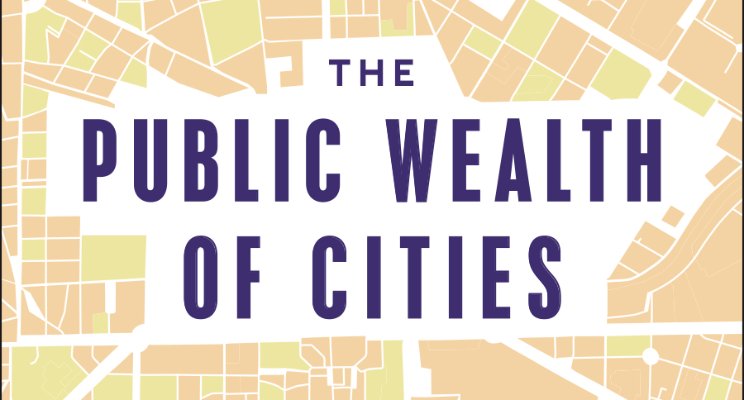Physical Address
304 North Cardinal St.
Dorchester Center, MA 02124
Physical Address
304 North Cardinal St.
Dorchester Center, MA 02124

We identified large 91 cities and counties that regularly fail to report their building permits to the Census Bureau - including some surprising culprits.
My sense is that parks and similar forms of public space tend to be far less controversial than housing or industry. But an interesting paper by Israeli architecture professor Hillel Schocken suggests that a city can have too much public space. He begins by asking: why do cities exist? He writes that cities allow people to “widen contact with as many people as possible… The more people one came in contact with the more he increased his chances of finding a suitable mate or potential “business partners” with whom he might exchange goods.” Thus, cities need places where one can come into contract with people that one does not already know. He adds that “the more public space per person within a study area the lower are the chances that people may enjoy mutual presence in public space. ” In other words, if most of the city is parkland or roads,your chances of actually meeting another person in the park is lower, since most of the parkland will be unoccupied at any given time. Schocken suggests that his view is supported by data: he studies four cities and the most pedestrian-friendly ones (Nice and a Brazilian favela) have relatively low amounts of public space per person, while Ashdod, Israel (which is more auto-oriented) has more, perhaps because more land is used for roads than in the other towns studied. He also studies Poundbury, a British new urbanist development which he thinks has far too much public space and is thus not as lively as it could be.

The starting point for Jacobs’s analysis and the focus of much of her thought is the city, its nature and significance. There are plenty of books out there that in some way celebrate cities. Many describe cities as engines of economic development, wellsprings of art and culture, and incubators of ideas religious, social, and scientific. But few go very far in explaining why and how all that usually happens in a city. Fewer still view the urban processes as expressions of “emergence,” or what some social theorists describe using the related term “spontaneous order.” That is the perspective of this book and its main contribution: To look closely at what makes a city a spontaneous order and an engine of innovation, and to trace the analytical and policy consequences of viewing it this way. Jane Jacobs is one of those exceptions, indeed an outstanding one. In fact, she is probably the first to carefully examine, not only the nature and significance of cities, but to distill realistic principles that govern urban systems and to analyze the mechanisms of economic change that follow from those principles. Her analysis of the relation between the design of public space and social interaction offer insights that complement, and often exceed, those of Max Weber, Henri Pirenne, Georg Simmel (pdf), Kevin Lynch, and others. Her work also has deep connections with modern social theorists such as F.A. Hayek, Elinor Ostrom, Mark Granovetter, and Geoffrey West. But she was not the first to develop conceptual tools congenial to understanding urban processes as emergent, spontaneous orders. In fact they have largely been available for decades in the field of economics, although few professional economists, including urban economists, have fully appreciated the urban origins of many of their standard concepts and tools of analysis. Indeed, there is a […]

The Public Wealth of Cities by Dag Detter and Stefan Fölster proposes a series of reforms to improve municipal finances. The authors lay out guidelines for creating urban wealth funds (UWFs) and argue that financial stability is key to societal success. Detter and Fölster first call for basic financial competency. According to the authors, most cities don’t even know what they actually own. Real estate and equipment are often owned directly by individual departments with no central record to provide a bird’s eye view of a city’s assets as a whole. When this is the case, good asset management becomes impossible because no one knows what they’re managing. The authors also point out the need for cities to decide what is and is not a commercial asset. Where administrators designate an asset as commercial, maximizing ROI should supersede all other objectives. That doesn’t mean everything a city owns has to be managed to turn a profit, but where a piece of real estate or a facility is meant generate income, it ought to be managed explicitly to that end. Professional financial planning is Detter and Fölster’s third major prescription. They argue that cities should hire professional asset managers to oversee their portfolios and that these managers should be shielded from the democratic process. They go on to make a very public choice argument that elected officials have inappropriately short time horizons and that pressure to please constituents can lead to decisions at odds with the long term sustainability of municipal finances. After developing that line of reasoning, they provide Singapore as an example of a municipality that does this pretty well. In terms of the ideas presented, I loved the book. It touches on the organizational challenges of getting municipal finance right while speaking to what execution has […]
Ants are a lot like humans in some ways. Look what ants can achieve without any top down management: [hat tip: Cafe Hayek]
I have little expertise in Medieval Cities and have little input, but thought it was interesting: Marginal Revolution – Medieval cities: Europe vs. the Arabic world also, Econlog – Producer and Consumer Cities Cities in the Arab world were on average much larger than those in Europe, and the size of the “primate” city – the megapolis such as Baghdad, Damascus, Cairo or Istanbul – was much bigger; a fact that is indicative of a predatory state and low trade openness. Europe, on the other hand, developed a very dense urban system, with relatively small principle cities. Big cities in Europe were quite often located near the sea, being able to optimally profit from long-distance trade, whereas the largest cities in the Arab world were almost all inland. The sociologist Max Weber introduced a distinction between ‘consumer cities’ and ‘producer cities’. Using this classification, Arab cities were – much more than their European counterparts – consumer cities. The classical consumer city is a centre of government and military protection or occupation, which supplies services – administration, protection – in return for taxes, land rent and non-market transactions. Such cities are intimately linked to the state in which they are embedded. The flowering of the state and the expansion of its territory and population tend to produce urban growth, in particular that of the capital city. In Europe cities are instead much closer to being producer cities. The primary basis of the producer city is the production and exchange of goods and commercial services with the city’s hinterland and other cities. The links that such cities have with the state are typically much weaker since the cities have their own economic bases. It is this aspect that accounts for the fact that Arab cities suffered heavily with the breakdown of the […]
Here’s a link to an interesting article by Scott Page at Planetizen called A Journalistic View of Cities Scott discusses how mainstream journalists are poorly equipped to write appropriately on urban issues aside from than architecture. I was reading the New York Times Magazine special architecture issue a few weeks ago when something jumped out at me. On the intro page to the issue of the “Mega-Megalopolis” one of the by-line says “How does an architect plan for a city with no history? Or a city that just keeps growing?” Interesting questions particularly given the fact that to charge architects with the task of planning our cities is affording too much power to a profession that simply doesn’t have it. Nor do planners for that matter. I’ve made it no secret in this blog that cities are the product of thousands of decisions made by individuals, organizations, leaders, businesses among others. We have the opportunity to guide some of those decisions and make more informed choices but the days of Hausmann and Napoleon who transformed Paris in the span of a few decades are coming to a close. Yes, yes, I know that China and a handful of other places are building cities ridiculously fast today and I also know that starchitects are generally charged with the task of creating large master plans to guide this government-sponsored development. I think we also know how unique a situation that is. Architects are flocking to build in China and Dubai precisely because of this unique opportunity. Where else can you feel like Robert Moses or Albert Speer, able to shape a city in a single bound? But what struck me most about the architecture issue is that the public’s perspective on cities today is written primarily by architecture critics. (emphasis mine) What’s […]